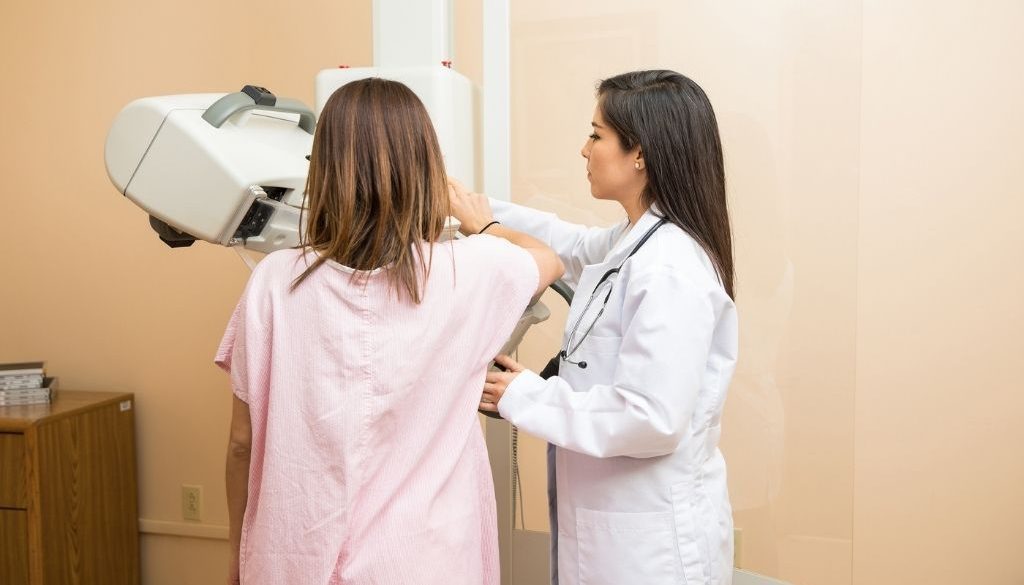What Does an Abnormal Mammogram Mean?
When you get the call that you have an abnormal mammogram, your mind moves into panic mode:
What if it’s cancer?
If it’s cancer, have I caught it early enough?
Where do I go from here?
There are hundreds of questions that probably flood your mind during this time. But don’t be anxious. Slow down and take a deep breath. Our health care professionals are here to walk you through the process of “what an abnormal mammogram means.”
We’ll also discuss what to do if you have an abnormal mammogram and the variety of conditions that can cause one.
But first, let’s address the area of biggest concern: What percentage of abnormal mammograms are cancer?
What Percentage of Abnormal Mammograms are Cancer?
It might surprise you to learn that most abnormal mammograms are NOT due to cancer.
In fact, according to the American Cancer Society, fewer than 1 in 10 women who are called back for additional tests have cancer.
University of Rochester Medical Center breaks down the statistics this way:
- Of all women who receive mammograms, 10 percent will receive a callback.
- Of those who have been called back, around 0.5 percent will have cancer.
Although this means that most callbacks will not be the result of cancer, these are still important follow-ups—closer examination is vital to ensure that if it is cancer that it is treated when breast cancer is at its earliest, and most treatable, stage.
What Does an Abnormal Mammogram Mean?
Essentially, an abnormal mammogram means that the radiologist has discovered something that warrants further examination.
Cancer is only one of the possible causes of an abnormal mammogram. There are several different conditions that can result in a situation where you may be called back for a doctor to take more images.
These include:
The need for clearer pictures
Sometimes the radiologist needs additional images to show areas of the breast tissue.
Dense breasts
Dense breast tissue can make it difficult to examine certain areas. If you have dense breasts, your radiologist may have ordered a callback in order to gain additional pictures.
Discovery of a mass
A mass could be a cyst—a pocket of tissue containing fluid—or a solid tumor. Further evaluations of these are necessary.
Change from earlier mammography
Often, radiologists will want to carefully re-examine areas that show changes from earlier mammograms.
What Should You Do If You Have an Abnormal Mammogram?
First, realize that it’s normal to be anxious and concerned. While many breast changes are not cancer, it is always appropriate to have an abnormal mammogram carefully examined.
We understand that awaiting the results of a follow-up can be filled with anxiety and stress. You may find that talking with friends, family members or a counselor will help as you await the result.
If the radiologist determines that this is a solid mass, you may have to have a biopsy, where a sample of breast tissue is removed and tested to see if it is malignant.
Mammograms Are An Important Part of Breast Cancer Detection
Breast cancer is the second most common form of cancer in American women. (Skin cancer is the first.)
In the United States, there is a 1 in 8 chance that a woman will develop breast cancer. Mammograms are one of the best screening tools to help us detect breast cancer in its earliest stages.
How Often Should I Have a Mammogram?
How often you should get a mammogram depends upon many factors, including your family history or if you’re at high risk for developing breast cancer.
Therefore, any recommendations we give are tailored with you in mind.
The American College of Radiology (ACR) and Society of Breast Imaging (SBI) recommend that women start getting annual mammograms at age 40. The American Cancer Society (ACS), US Preventive Services Task Force (USPSTF), ACR and SBI agree that this approach saves the most lives.\
According to the American College of Radiology, by not getting annual mammograms starting at age 40, you increase your chances of dying from breast cancer and the likelihood that you will experience more extensive treatment for any cancers found.
However, if you have a family history of breast cancer, we may recommend that you start annual mammogram screenings before age 40.
Breast Care at Conway Medical Center
Did you know that we were the first Horry County facility to offer state-of-the-art 3D mammography technology?
3D mammograms provide greater detailed images, which makes them more accurate than traditional 2D mammograms. 3D mammograms can also capture the slightest change or abnormalities in breast tissue.
Breast health is a highly specialized field. That’s why every member of our team has extensive experience and certifications to enable them to give you the highest level of quality care.
Breast health team members include:
- A reconstructive surgeon
- A medical oncologist
- A pathologist
- Board-certified radiologists
- Board-certified surgeons
- Nationally registered and state-certified technologists
- Experienced, compassionate support staff
Our center offers a wide variety of breast health services, including:
- Breast biopsies
- Breast ultrasounds
- Cyst aspiration
- Breast MRIs
We encourage you to follow your doctor’s recommendations for regular mammogram screenings. If you have an abnormal result, we want to assure you that we are with you every step of the way. Contact us for more information about the scope of services at Conway Medical Center.




